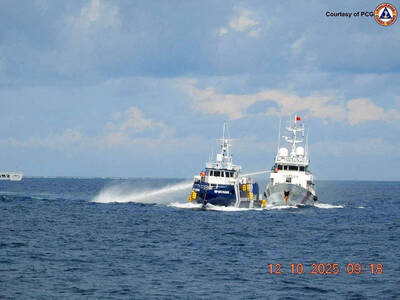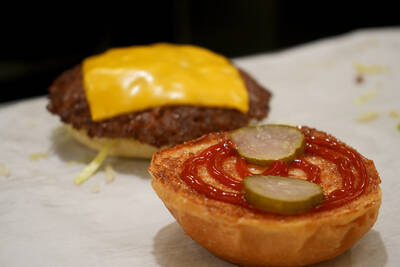If you have a couple of hundred thousand US dollars to spare and room for a giant relic of the old East-West confrontation, Russia has just the thing for you: one of its submarines.
Or maybe a less cumbersome World War II Soviet battle tank in your yard might settle one-upmanship scores with the neighbors?
With scores of decommissioned diesel-electric subs from the Soviet era cluttering bays in the Arctic, Baltic, Black Sea and Pacific regions, the military has shown itself open to offers to buy warships for reincarnation as museums, cargo ships and tourist attractions.
While Russian Navy spokesman Igor Dygalo stresses there is "no disorderly sale of submarines," individual vessels can even be found for sale on the Internet.
On land, warehouses with vintage armored vehicles and artillery pieces may soon be cleared as the state arms export agency Rosoboronexport explores the possibility of deactivating the items, many of them left from World War II, and selling them to collectors.
"It is an attractive market and we cannot stand aside," Rosoboronexport spokesman Alexander Uzhanov told The Moscow Time newspaper.
"These arms bear the image of our victory, our heroic past. We plan to increase arms sales, so why not use up these reserves as well?" he said.
A T-34 tank of the kind that was instrumental in smashing Adolph Hitler's armies could fetch up to US$20,000, militaria experts believe. But for now, regulations on the sale of weaponry are holding up the plans.
Rekindling memories of the Cold War and generating fresh interest after movies like K-19: The Widowmaker, Soviet submarines have won a new lease of life in Russia and abroad in recent years.
Some still serviceable subs go to foreign navies, but other retired ones may win a reprieve from the scrap heap to thrill the public.
"Look what's surfaced now that Communism's sunk!" reads the advertisement for U-475, a 92m, 1,950-tonnes example that was delivered to Britain in 1994 from Russia's Baltic fleet.
Bought through middlemen by a British businessman for around ?250,000 (US$470,000), the submarine hosts tours, school outings and private parties and was the setting for three films, said museum manager Gary Parkinson.
Many of around 85 old military submarines on display around the world from Stockholm to Sydney came from Soviet shipyards.
Most recently, the 90m Novosibirsky Komsomolets was towed from Arkhangelsk to Moscow to serve as a museum. The sub was retired in 1998 after 18 years of service and lay idle until it underwent a two-year conversion by a Russian ship-building company.
Of course, the fate of old and relatively hazard-free diesel-electric models is of less concern than that of retired nuclear- powered submarines that Russia must safely dispose of at huge cost.
"The submarines lay sunken in shallow water so they were not dismantled," a middleman replied to an e-mail inquiry. "They have practically all their equipment apart from weaponry. After purchase they will be raised, prepared and transported to the designated place."
But foreign powers needn't think they will glean new insights into Russia's submarine technology if they pick up these or other models.
"All classified equipment is removed [from a vessel] before it is transported; no government will hand over its state secrets, will it?" said a navy spokesman.

Many people noticed the flood of pro-China propaganda across a number of venues in recent weeks that looks like a coordinated assault on US Taiwan policy. It does look like an effort intended to influence the US before the meeting between US President Donald Trump and Chinese dictator Xi Jinping (習近平) over the weekend. Jennifer Kavanagh’s piece in the New York Times in September appears to be the opening strike of the current campaign. She followed up last week in the Lowy Interpreter, blaming the US for causing the PRC to escalate in the Philippines and Taiwan, saying that as

Taiwan can often feel woefully behind on global trends, from fashion to food, and influences can sometimes feel like the last on the metaphorical bandwagon. In the West, suddenly every burger is being smashed and honey has become “hot” and we’re all drinking orange wine. But it took a good while for a smash burger in Taipei to come across my radar. For the uninitiated, a smash burger is, well, a normal burger patty but smashed flat. Originally, I didn’t understand. Surely the best part of a burger is the thick patty with all the juiciness of the beef, the

This year’s Miss Universe in Thailand has been marred by ugly drama, with allegations of an insult to a beauty queen’s intellect, a walkout by pageant contestants and a tearful tantrum by the host. More than 120 women from across the world have gathered in Thailand, vying to be crowned Miss Universe in a contest considered one of the “big four” of global beauty pageants. But the runup has been dominated by the off-stage antics of the coiffed contestants and their Thai hosts, escalating into a feminist firestorm drawing the attention of Mexico’s president. On Tuesday, Mexican delegate Fatima Bosch staged a

The ultimate goal of the Chinese Communist Party (CCP) is the total and overwhelming domination of everything within the sphere of what it considers China and deems as theirs. All decision-making by the CCP must be understood through that lens. Any decision made is to entrench — or ideally expand that power. They are fiercely hostile to anything that weakens or compromises their control of “China.” By design, they will stop at nothing to ensure that there is no distinction between the CCP and the Chinese nation, people, culture, civilization, religion, economy, property, military or government — they are all subsidiary